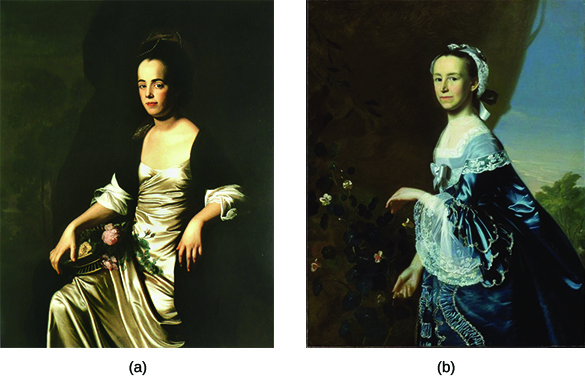| << Chapter < Page | Chapter >> Page > |
Inspired by the Revolution, Judith Sargent Murray of Massachusetts advocated women’s economic independence and equal educational opportunities for men and women ( [link] ). Murray, who came from a well-to-do family in Gloucester, questioned why boys were given access to education as a birthright while girls had very limited educational opportunities. She began to publish her ideas about educational equality beginning in the 1780s, arguing that God had made the minds of women and men equal.

Murray’s more radical ideas championed woman’s economic independence. She argued that a woman’s education should be extensive enough to allow her to maintain herself—and her family—if there was no male breadwinner. Indeed, Murray was able to make money of her own from her publications. Her ideas were both radical and traditional, however: Murray also believed that women were much better at raising children and maintaining the morality and virtue of the family than men.
Adams, Murray, and Warren all came from privileged backgrounds. All three were fully literate, while many women in the American republic were not. Their literacy and station allowed them to push for new roles for women in the atmosphere of unique possibility created by the Revolution and its promise of change. Female authors who published their work provide evidence of how women in the era of the American Revolution challenged traditional gender roles.
Overall, the Revolution reconfigured women’s roles by undermining the traditional expectations of wives and mothers, including subservience. In the home, the separate domestic sphere assigned to women, women were expected to practice republican virtues, especially frugality and simplicity. Republican motherhood meant that women, more than men, were responsible for raising good children, instilling in them all the virtue necessary to ensure the survival of the republic. The Revolution also opened new doors to educational opportunities for women. Men understood that the republic needed women to play a substantial role in upholding republicanism and ensuring the survival of the new nation. Benjamin Rush, a Whig educator and physician from Philadelphia, strongly advocated for the education of girls and young women as part of the larger effort to ensure that republican virtue and republican motherhood would endure.
By the time of the Revolution, slavery had been firmly in place in America for over one hundred years. In many ways, the Revolution served to reinforce the assumptions about race among white Americans. They viewed the new nation as a white republic; blacks were slaves, and Indians had no place. Racial hatred of blacks increased during the Revolution because many slaves fled their white masters for the freedom offered by the British. The same was true for Indians who allied themselves with the British; Jefferson wrote in the Declaration of Independence that separation from the Empire was necessary because George III had incited “the merciless Indian savages” to destroy the white inhabitants on the frontier. Similarly, Thomas Paine argued in Common Sense that Great Britain was guilty of inciting “the Indians and Negroes to destroy us.” For his part, Benjamin Franklin wrote in the 1780s that, in time, alcoholism would wipe out the Indians, leaving the land free for white settlers.

Notification Switch
Would you like to follow the 'U.s. history' conversation and receive update notifications?